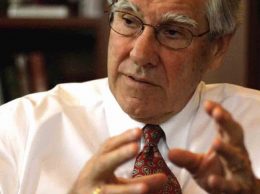Our View: Universities keep our region on top in innovation
If you want to know why the innovation culture is so important to the regional economy, look no further than the 2021 ranking of our top universities.
In the latest U.S. News & World Report rankings, released Sept. 12, UC Santa Barbara cracked the top five among national public universities. Cal Poly San Luis Obispo, California Lutheran University in Thousand Oaks and CSU Channel Islands near Camarillo also fared well, particularly in regional rankings.
And a consistent theme was making a university degree accessible for veterans and active-duty military — an important group of students that has its own entrepreneurial bent. With the universities rising in the U.S. News rankings, their ability as a group to attract a new generation of innovators is pretty much unparalleled anywhere in the nation.
In the rankings, UCSB was No. 28 among national universities, a list topped by Princeton University at No. 1 and a tie for second among Columbia University, Harvard University and the Massachusetts Institute of Technology. The only public universities ranked higher than UCSB were UCLA, UC Berkeley, the University of Michigan and the University of Virginia.
Cal Poly was No. 2 among regional universities in the West, after Trinity University in San Antonio, Texas, and No. 1 among public regional universities. California Lutheran was No. 8 among regional universities in the West, and CSU Channel Islands near Camarillo was No. 41 on that list. Thomas Aquinas College, a small private school near Santa Paula, was No. 42 among national liberal arts colleges, and Westmont College in Montecito was No. 114 on that list.
Cal Poly San Luis Obispo and Cal Lutheran were also at the top of the regional list of best colleges for military veterans, which U.S. News said rewards “top-ranked schools that make pursuing a college education more affordable for veterans and active-duty service members.” Cal Poly was No. 1 on that list and Cal Lutheran was No. 2. Among national universities, UCSB was No. 10 on the “Best Colleges for Veterans” list.
The three University of California campuses were the most affordable schools in the national top 30; their in-state tuition of about $14,000 is less than a quarter of the amount charged by private universities like Duke, USC and Georgetown.
There is a caveat that comes with the U.S. News rankings and that is the fact that the survey is highly subjective and based in part on opinion surveys of college administrators, rather than objective data.
But the ratings themselves are a driver of decision making — for students and faculty applicants as well — and on that score, the Central Coast looks to be in very competitive for years to come.
UCSB Chancellor Henry Yang has described the region as a magnet for innovation whose attractive power has increased over time. The emergence of the Technology Management program at UCSB, Hub101 at Cal Lutheran, the HotHouse at Cal Poly and related programs at Westmont and CSUCI have nurtured the innovation process.
In the aggregate, U.S. News rankings describe a region that has an active and rising academic ecosystem that embraces a wide range of institutions — public and private, national and regional.
The post-pandemic world presents its share of challenges to traditional thinking about academia and the campus life. But as a new school year gets underway, the Central Coast starts from a strong position with plenty of room to seize new opportunities.












